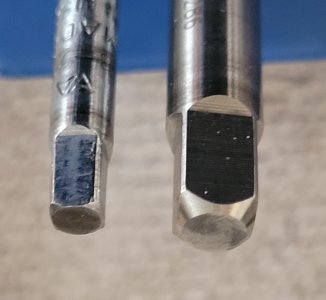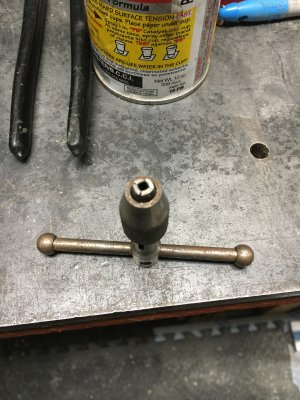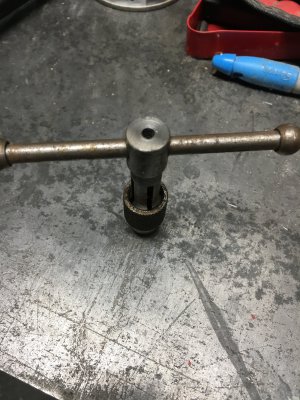I finally broken down and bought a B&S spring loaded tap guide. Much to my surprise when I went to use it on a 8-32 spiral flute tap I discovered that the tap had a "flat" top, not a pointed one like I thought. Looking through my other small taps (6-32 through 1/4") they're all like that (man, I coulda sworn....).
I presume these taps are hardened so I thought maybe I could grind a point on the top using my bench grinder but that doesn't seem very precise. I don't think I can drill a dimple in them either.
But would something like a tiny (1/8"?) carbide end mill make a dimple in this material?
Oh, I'm concentrating on the tap itself for these small ones because I made some small tap handles like Joe Pi recently featured (here) so using the tap guide on a conventional tap handle that has the dimple in the top won't work.
All suggestions appreciated!
I presume these taps are hardened so I thought maybe I could grind a point on the top using my bench grinder but that doesn't seem very precise. I don't think I can drill a dimple in them either.
But would something like a tiny (1/8"?) carbide end mill make a dimple in this material?
Oh, I'm concentrating on the tap itself for these small ones because I made some small tap handles like Joe Pi recently featured (here) so using the tap guide on a conventional tap handle that has the dimple in the top won't work.
All suggestions appreciated!




